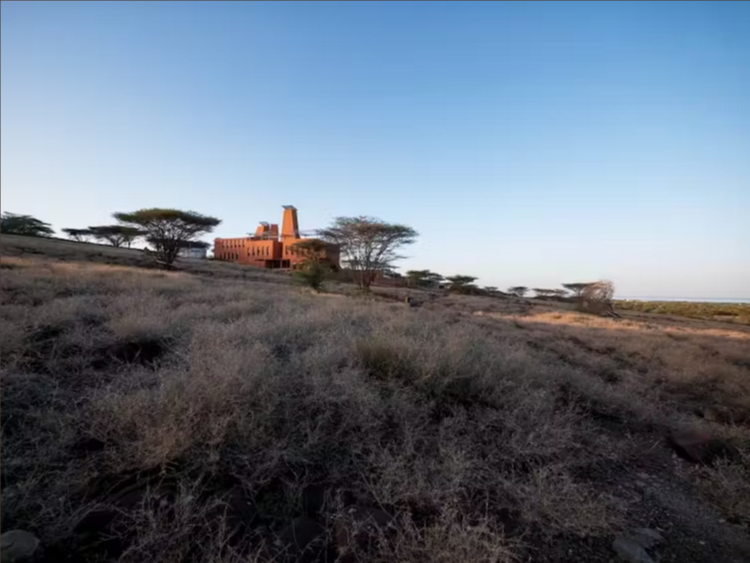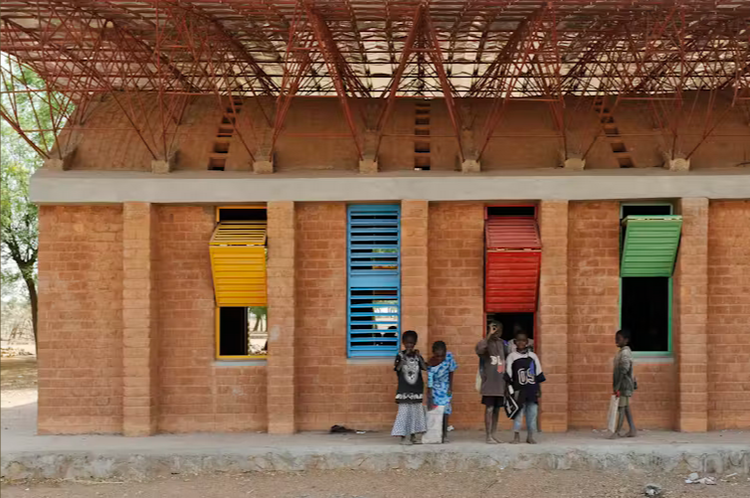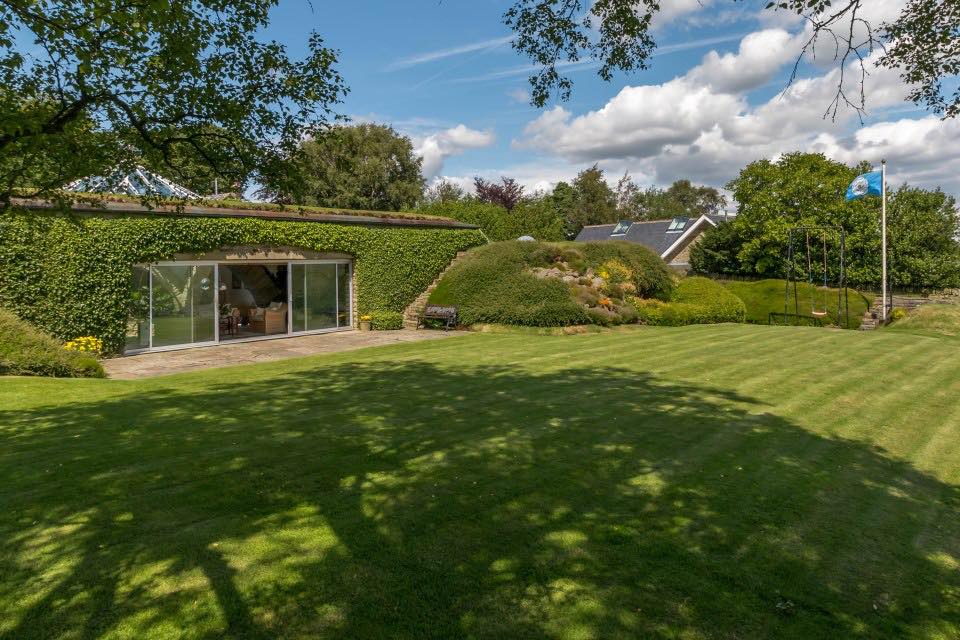Architects around the world are finding ways to respond to their local climates and cultural contexts to keep housing cooler. Some are inspired by vernacular architecture and others learn from nature and employ biomimicry.
 The Startup Lions campus is an information and communications technology campus located on the banks of Lake Turkana, Kenya. This building is inspired by African termite mounds that are found around the site. The mounds have a network of tunnels and vents that allow cool air to enter through small openings at the base, while warm air rises and exits through a central chimney, maintaining a stable internal environment.
The Startup Lions campus is an information and communications technology campus located on the banks of Lake Turkana, Kenya. This building is inspired by African termite mounds that are found around the site. The mounds have a network of tunnels and vents that allow cool air to enter through small openings at the base, while warm air rises and exits through a central chimney, maintaining a stable internal environment.
The towers then help extract this warm air through the stack effect, whereby the difference in air pressure and temperature causes the warm air to rise and escape through the top of the structure, drawing in cooler air from below. This process helps to continuously circulate fresh air and cool the building.
 In Burkina Faso, an extension at Gando primary school stays cool in extreme heat through natural ventilation enabled by its double roof. The double roof serves two functions. First, it provides an overhang, shading the whole building against the harsh sun throughout the year. Second, as the heat naturally rises, it escapes into the gap created between the first and second roofs. Prevailing winds then quickly carry it away, accelerating the process and cooling the building more efficiently.
In Burkina Faso, an extension at Gando primary school stays cool in extreme heat through natural ventilation enabled by its double roof. The double roof serves two functions. First, it provides an overhang, shading the whole building against the harsh sun throughout the year. Second, as the heat naturally rises, it escapes into the gap created between the first and second roofs. Prevailing winds then quickly carry it away, accelerating the process and cooling the building more efficiently.
The outer roof is designed with a curved shape, creating what is known as the Venturi effect – a phenomenon where air accelerates as it flows through the narrower sections formed by the curve. This significantly boosts the building’s natural ventilation and shows how multiple strategies can build on each other to achieve a greater cooling performance.
 Earth sheltering has proven to be a way to create comfortable indoor temperatures. Underhill, for example, is a house designed by British architect Arthur Quarmby in west Yorkshire that uses the stable temperature of the Earth to stay cool in summer.
Earth sheltering has proven to be a way to create comfortable indoor temperatures. Underhill, for example, is a house designed by British architect Arthur Quarmby in west Yorkshire that uses the stable temperature of the Earth to stay cool in summer.
While the temperature of the air is subjected to sunlight, wind and general weather patterns, underground temperatures stay relatively constant at a depth of 2-4m. This is because the ground has a much higher thermal mass than air, meaning it can absorb and store large amounts of heat without significant temperature changes.
As a result, earth sheltering protects and buffers the building from outdoor temperature extremes, precipitation, wind and humidity. This, in turn, keeps indoor temperatures more stable, preventing overheating during the summer and maintaining a warmer environment during the winter.
As we face increasingly frequent and intense heatwaves, the need for innovative architectural solutions becomes more pressing. Buildings can remain comfortable without resorting to energy-intensive mechanical systems. The construction industry has a duty to prioritize climate-responsive designs that minimize energy use and contribute to creating a more sustainable and resilient built environment.
You can read the original article at theconversation.com

Passive cooling is just so much more pleasant than mechanical cooling. It is surprising how much of that art we lost during the 1900s – that hopefully we will get back to more in the 2000s.